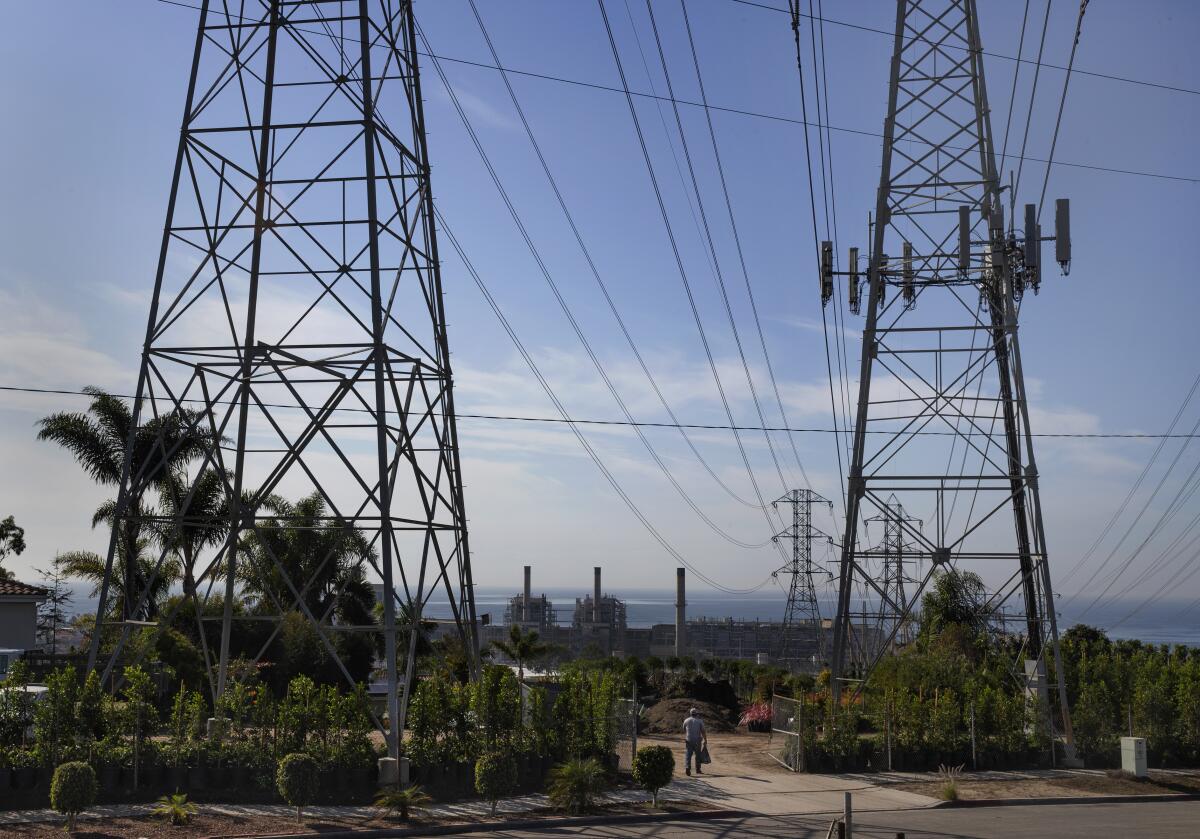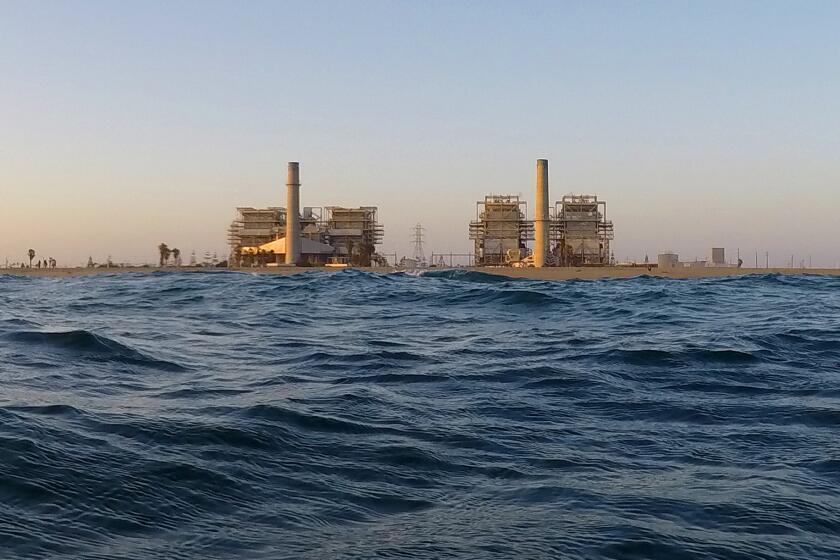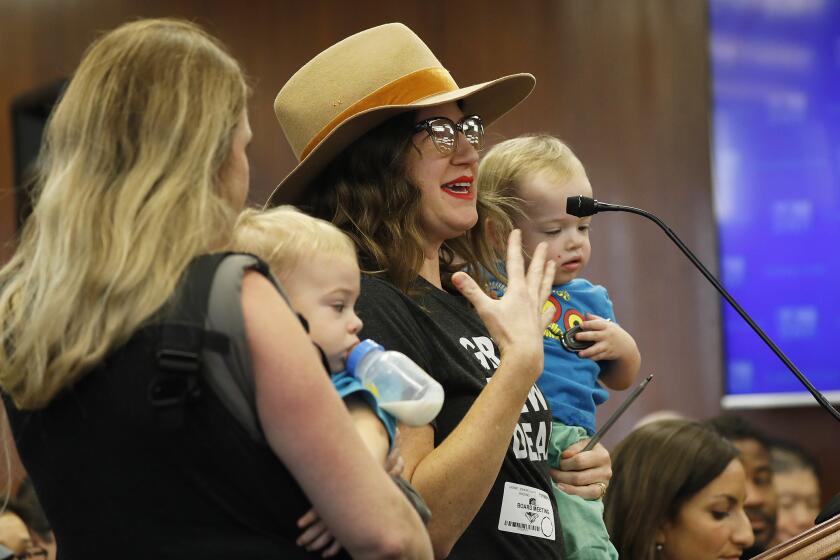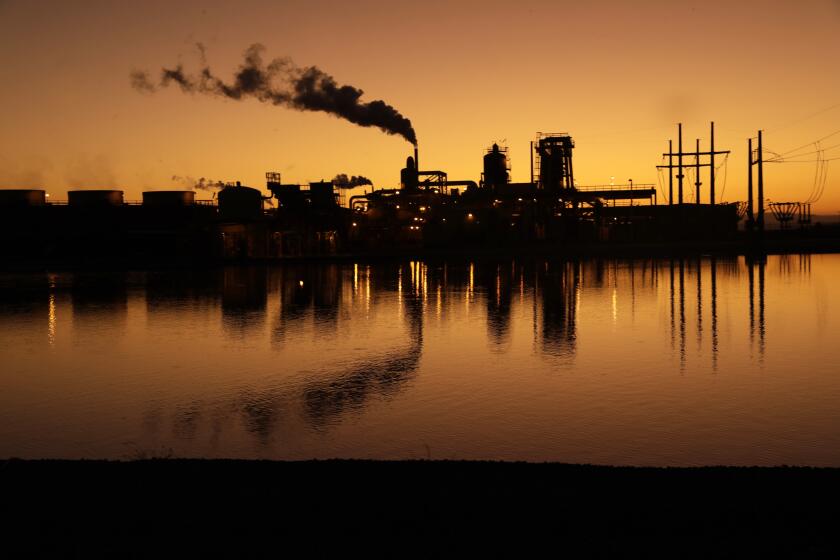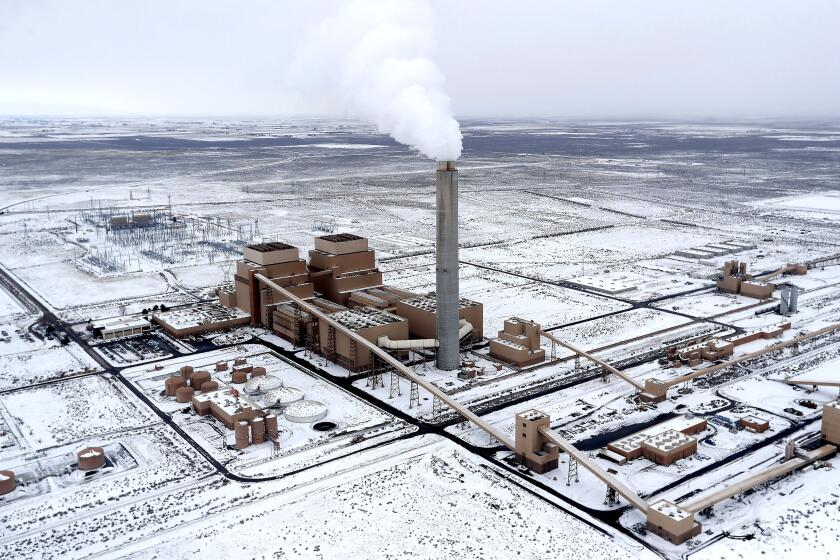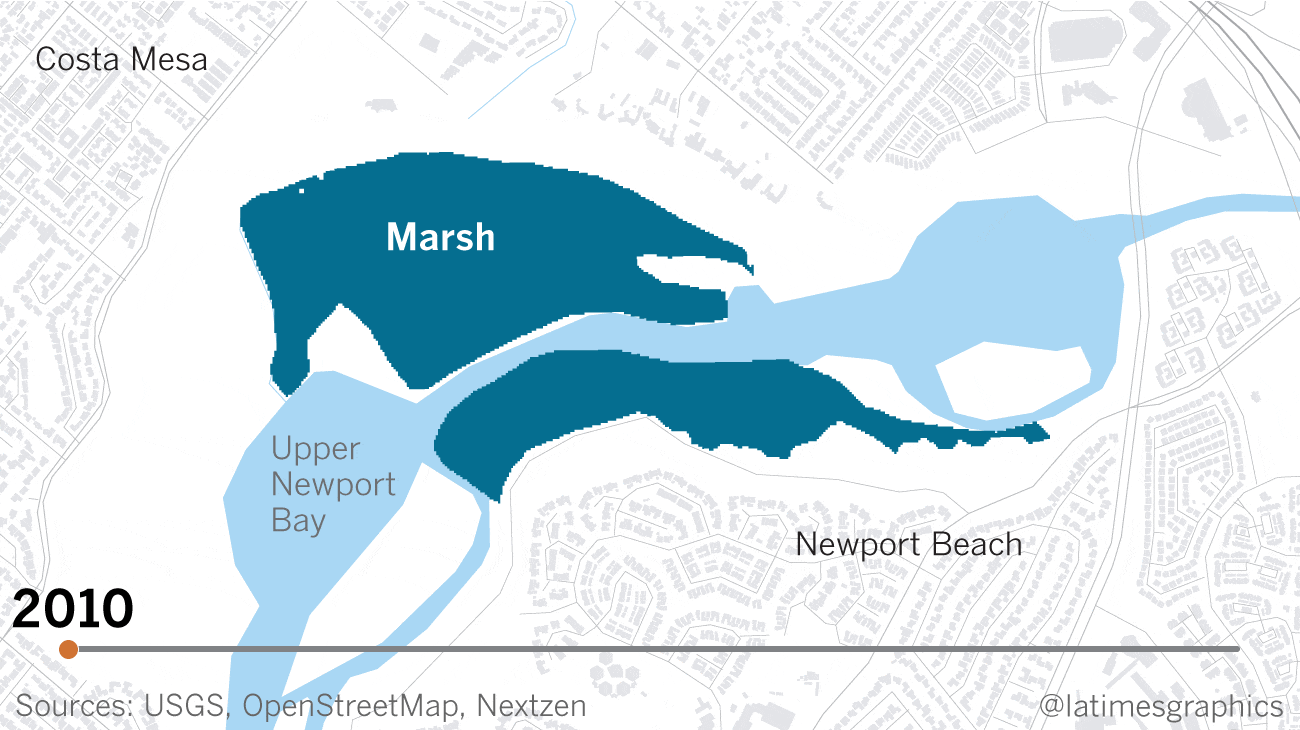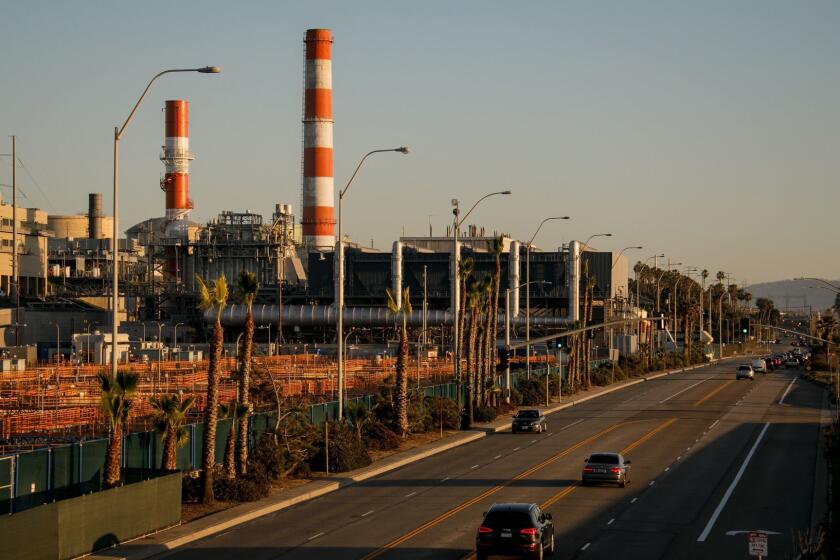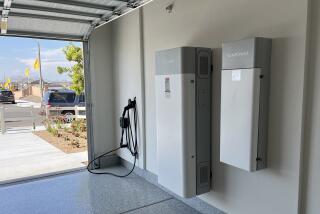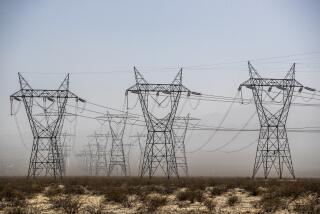California faces a crossroads on the path to 100% clean energy
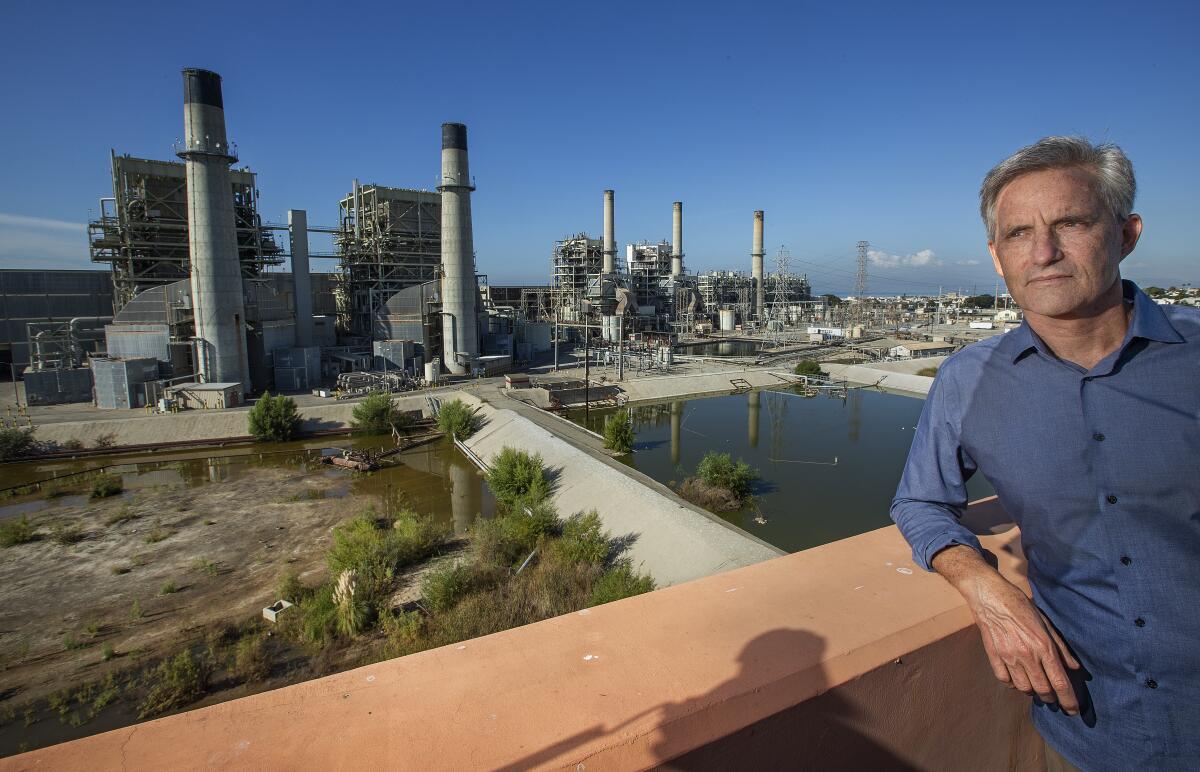
Bill Brand spent two decades fighting to get the waterfront power plant in Redondo Beach torn down and replaced with a public park. Until recently, he was sure he had won.
Regulators had set a deadline of Dec. 31, 2020, for owner AES Corp. to shutter the hulking power plant, whose smokestacks are bordered by a marina, six acres of wetlands and some of the most densely populated neighborhoods on the California coast. Plans were coming together for the city to purchase half the site — a triumph for Brand, whose campaign for open space and cleaner air had fueled his rise from activist to Redondo Beach mayor.
Then state officials had a last-minute change of heart.
In a unanimous vote last month, the California Public Utilities Commission said the gas-burning facility should be allowed to keep operating through 2022. The commission said the Redondo Beach facility — and three other coastal gas plants also slated for closure or rebuilding — is needed to keep reliable electricity flowing to Southern California residents for a few more years, until utilities can fully replace them with non-polluting resources.
The power plants in Redondo Beach, Huntington Beach, Long Beach and Oxnard have become an early battleground in an increasingly urgent debate: How much natural gas does California need on its power grid, and for how long?
For climate change activists, the greatest obstacle to ditching gas may be delay, not denial.
About half the state’s electricity came from climate-friendly sources such as solar and wind power last year, and lawmakers have set a target of 100% by 2045. But natural gas, a planet-warming fossil fuel, still generates one-third of the state’s power — and officials don’t yet have a plan for phasing it out.
Whether the four coastal power plants shut down in 2020 or keep running a while longer — a final decision will be made by the State Water Resources Control Board — California’s overall electricity mix won’t change much. The aging Redondo Beach facility, for instance, operated at just 2% of its full capacity last year, meaning utilities were willing to buy its power only on high-demand days when they badly needed a little extra juice.
But clean energy advocates worry a decision to extend the coastal power plants could set a precedent that reverberates for years.
“We have to close the door on gas,” said Luis Amezcua, a senior campaign representative with the Sierra Club.
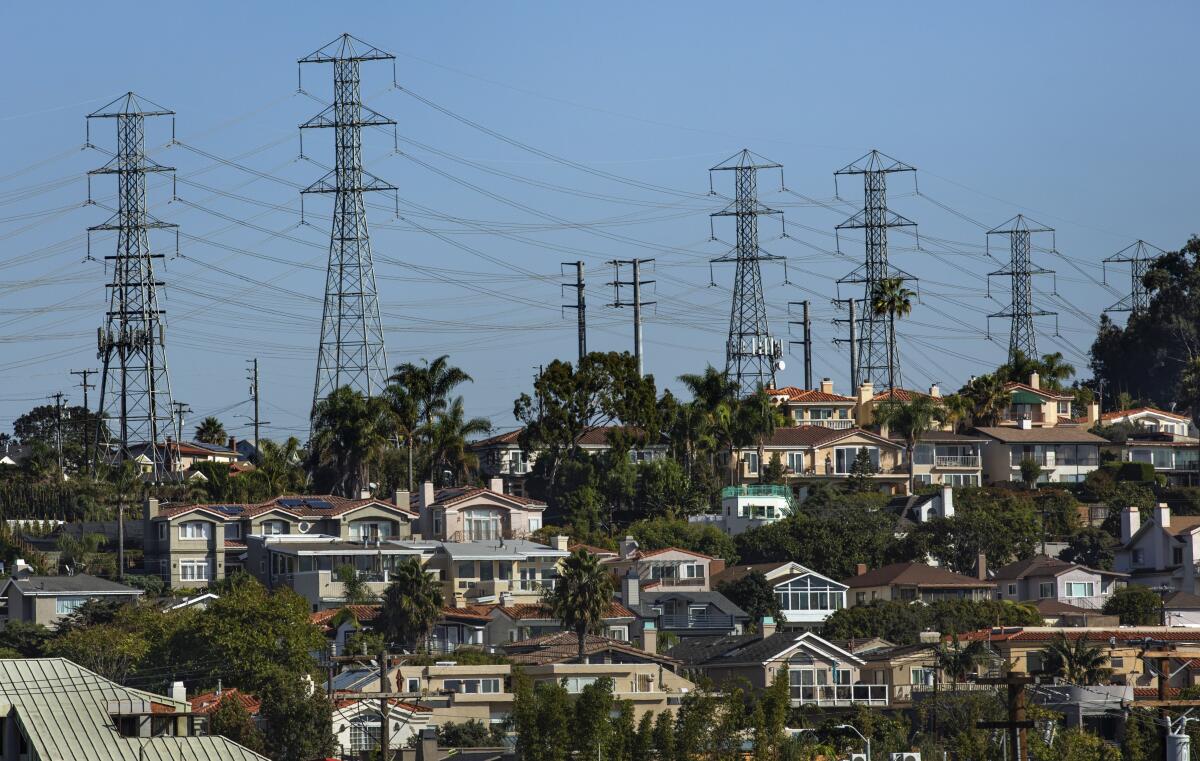
Brand fears an extension could derail his city’s plans for a park, as well as a “greenbelt” stretching from the beach to the 405 freeway along a corridor now dominated by power lines.
“I don’t think it’s a big deal if it’s maybe one year,” he said. “But what I fear is they’ll be back in two or three years asking for more time.”
Cheap solar, storage are changing everything
Although natural gas burns more cleanly than coal, it’s still one of the biggest sources of climate pollution. Globally, planet-warming carbon emissions from natural gas are rising more quickly than emissions from coal are falling, according to recent research led by a Stanford University scientist.
In an ironic twist, the rapid growth of solar power is one of the reasons energy regulators say it’s too soon to retire the four coastal gas plants.
Growing amounts of California’s electricity are supplied by solar farms — sometimes 50% or more on spring afternoons, when sunshine is abundant and electricity demand is low. But all that solar generation drops off sharply each evening, at which point natural gas plants typically fire up to fill the gap.
The gap is getting bigger as more solar panels are installed and as gas plants shut down. The Public Utilities Commission released an analysis in June showing the state could face electricity shortfalls as soon as 2021 on hot summer evenings when use of air conditioning remains high after sundown.
The coastal gas plants, which suck up billions of gallons of ocean water each day, are supposed to close in 2020.
To address the potential shortfalls, the commission ordered utilities across the state to buy 3,300 megawatts of new resources, enough to power roughly 4.4 million homes. The commission prohibited contracts for new gas-only power plants, a move designed to promote clean resources such as solar power paired with batteries, or “demand response” programs in which utilities pay customers to use less electricity during high-demand periods.
But most of those clean resources are “unlikely to be developed in time to meet the reliability needs in the next few years,” Ed Randolph, director of the commission’s energy division, told the state water board last month — hence the commission’s request to keep the coastal gas plants running past 2020.
“The physical reality today, and in the near future, is that we still need some gas plants,” Randolph said.
He may be right. But in the energy industry, physical reality is shifting so quickly that sometimes utilities and their regulators struggle to keep up.
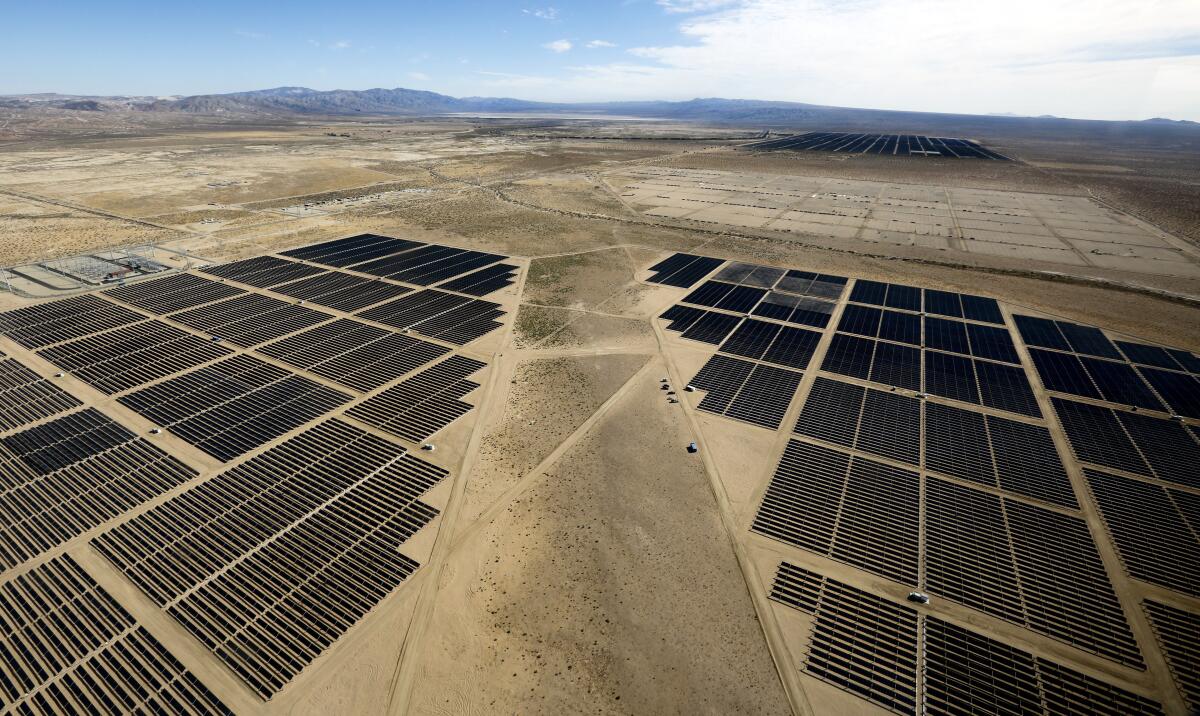
The day before the Public Utilities Commission recommended an extension for the coastal gas plants, the Los Angeles City Council voted to buy electricity from a solar-plus-storage facility in the Mojave Desert, with lithium-ion batteries designed to pump stored solar energy into the grid for up to 4 hours each night. The city will pay 3.3 cents per kilowatt-hour of electricity — a record low for a solar-plus-storage contract, and cheaper than power from gas.
Last week, BloombergNEF released its annual report on the cost of lithium-ion batteries. The research firm said industry-average battery prices fell 13% in 2019, capping off an 87% decline since the beginning of the decade.
Low-cost clean energy is already putting gas plants out of business.
General Electric Co. said in June it would shutter its 750-megawatt Inland Empire Energy Center in Riverside County by the end of 2019, citing unfavorable market conditions. The gas plant opened barely a decade ago.
Last week, Summit Power Group of Seattle asked the California Energy Commission to terminate the license for its Palmdale Energy Project, a proposed 700-megawatt gas plant in the high desert of northern Los Angeles County.
Mayor Eric Garcetti has worked to portray himself as a global leader in the fight against climate change.
The Union of Concerned Scientists, a nonprofit advocacy group, released a report last year finding that a quarter of the gas plant capacity connected to California’s main power grid could be shut down immediately without sacrificing reliable electric service.
“Our model was telling us that no new investments in natural gas plants was the lowest-cost option going forward,” said Mark Specht, an energy analyst at the environmental group who coauthored the report.
Clean energy advocates are convinced California could build enough non-polluting resources by summer 2021 to replace the coastal gas plants.
As evidence, they point to the quick response by utilities and regulators to the Aliso Canyon natural gas leak, which constrained gas supplies in the L.A. Basin. To ensure the lights stayed on, Southern California Edison and San Diego Gas & Electric got 100 megawatts of battery storage built in six months.
Why natural gas isn’t done yet
Despite the economic head winds, some energy companies are bullish about natural gas.
Take AES Corp., which is investing more than $2 billion in an overhaul of its gas plant facilities in Huntington Beach and Long Beach.
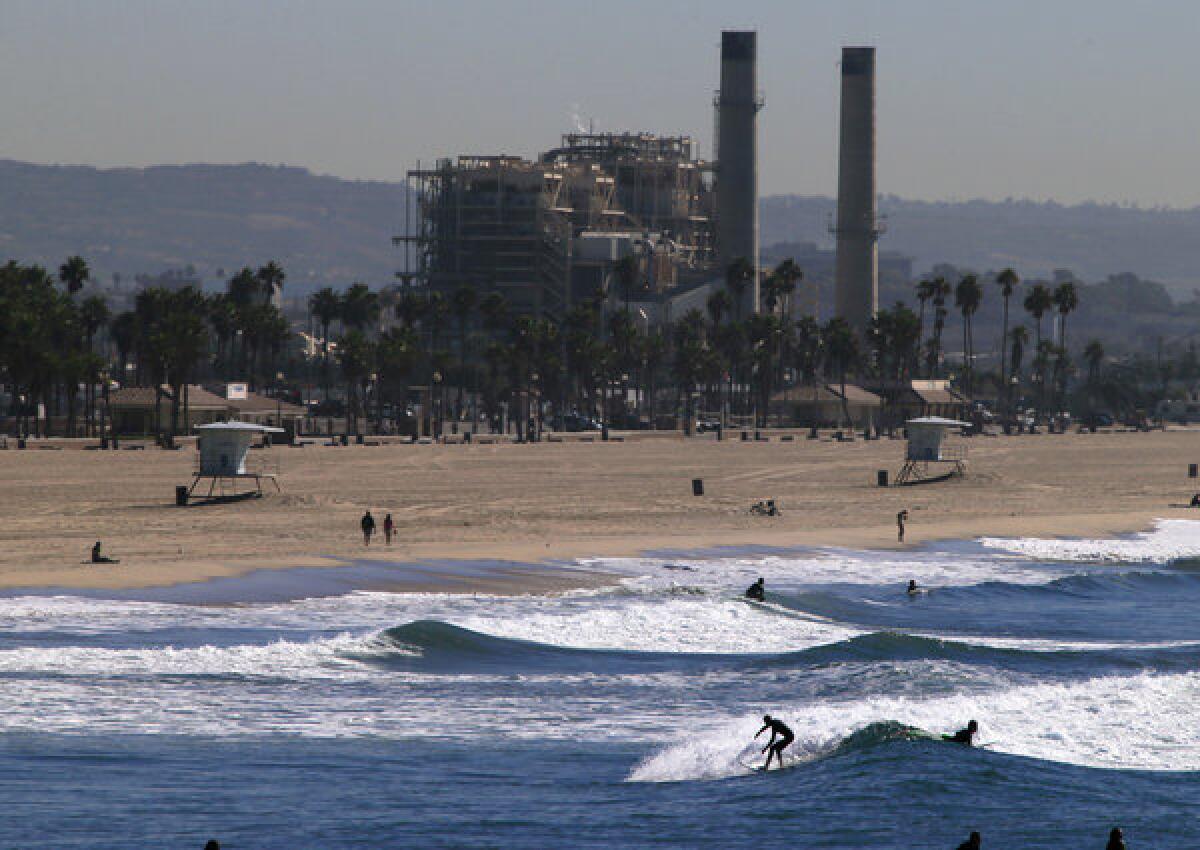
Like the Redondo Beach facility, which AES also owns, the existing gas turbines at the two sites must be shut down by Dec. 31, 2020, under a state water board regulation requiring power plants to stop using ocean water for cooling. Rather than shutting the plants down, the company is installing new gas turbines that use air for cooling.
An extension from the state water board could keep the existing turbines running for a little while longer. The Public Utilities Commission recommended that the seawater-cooled turbines in Huntington Beach and Long Beach be allowed to keep operating an additional three years, through 2023.
But AES isn’t betting everything on gas.
As part of the $1.3-billion overhaul of its Alamitos facility in Long Beach, the Virginia-based company broke ground in June on 100 megawatts of energy storage. The lithium-ion batteries will be able to supply electricity to the power grid at full capacity for up to 4 hours before they need to recharge.
Ken Zagzebski, president of the AES subsidiary that runs the company’s California facilities, said the batteries will most likely charge during the middle of the day, when there’s lots of cheap solar power on the grid. Then they’ll discharge in the evening, negating the need for some gas-fired generation.
“It’s a flexible resource that can discharge almost instantly,” Zagzebski said.
A geothermal power company says it can make California’s Salton Sea the first major source of U.S. lithium production.
So why not start the process of shutting down all the gas plants?
A key reason is that renewable energy and batteries can’t do everything gas plants currently do.
Lithium-ion batteries typically store enough electricity only for a few hours — and during the winter, the sun and wind can disappear for days at a time. Building enough solar panels, wind turbines and batteries to keep the lights on even during those cloudy, windless periods would be “extremely costly and impractical,” according to research presented to state officials last month by Energy and Environmental Economics Inc., better known as E3.
The consulting firm released a study in June finding California might still need between 17,000 and 35,000 megawatts of gas capacity in 2050. At the high end, that’s not far from the 41,000 megawatts of gas installed today.
The study was commissioned by Houston-based Calpine Corp., which owns 20 gas-fired plants in the state.
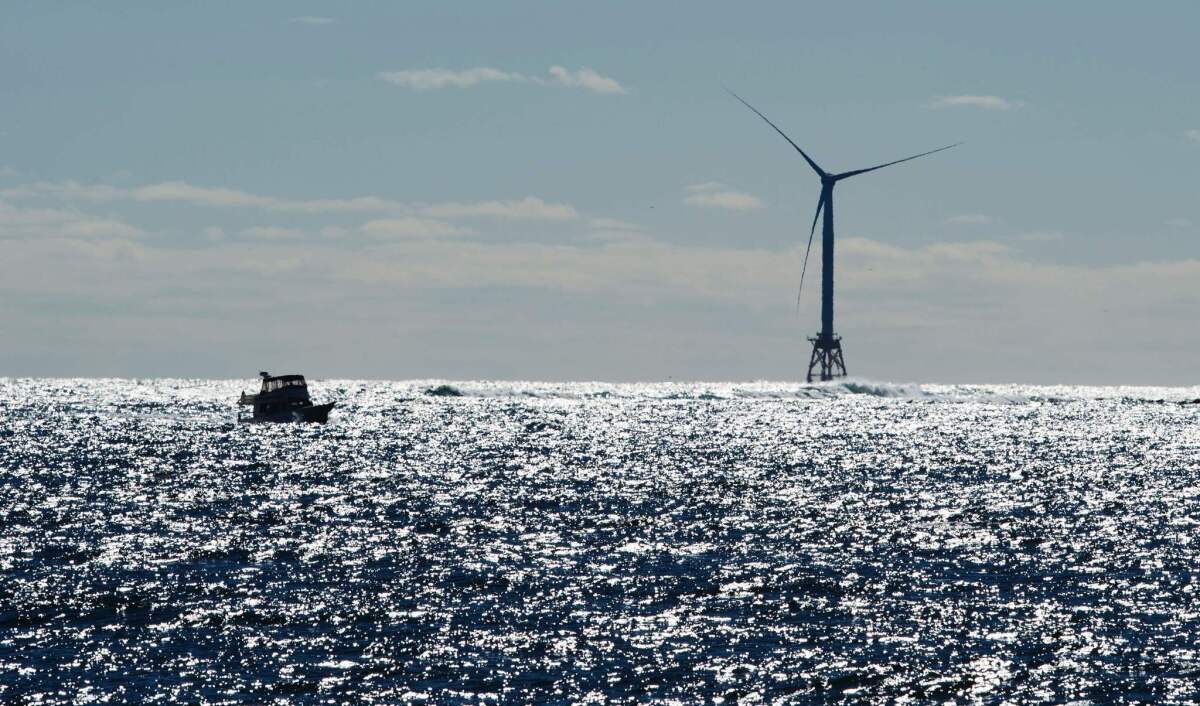
But what about Senate Bill 100, the legislation requiring 100% zero-carbon electricity by 2045?
On the surface, the law appears to require a total phaseout of natural gas, barring significant advances in “carbon capture” technology to prevent emissions from reaching the atmosphere. But to the consternation of environmentalists, state officials have suggested a different interpretation of the law — an interpretation in which California can still burn some gas, so long as the state generates enough clean electricity to cover 100% of retail sales.
The Public Utilities Commission explained how the accounting might work at a workshop last month focused on implementing SB 100. Excess solar power exported to other states during the afternoon could be counted toward the 100% mandate. And electricity lost during the journey from power plant to customer — known as “line loss” — wouldn’t be counted toward retail sales, giving utilities extra room to burn gas without violating the law.
Environmentalists weren’t happy to hear that.
In a comment letter last week, representatives of the California Environmental Justice Alliance, Earthjustice and Sierra Club California wrote that state officials “will squander precious time if they base their first SB 100 report on the false assumption that California can still rely on fossil fuels for electricity in 2045.” They cited a recent United Nations report finding that “deeper and faster cuts” in carbon emissions are needed to avoid climate catastrophe.
“The growing need for rapid action and bold climate leadership from California cannot be overstated,” they wrote.
Clean energy advocates don’t buy the idea that gas plants will still be needed on the power grid of the future. They point to other technologies that might eventually fill the role of natural gas, such as offshore wind turbines, geothermal plants, renewable hydrogen and compressed air energy storage.
If L.A. succeeds, a hydrogen-burning Intermountain Power Plant could become a model for governments and electric utilities around the world.
Visions of waterfront renewal
Before there was a power plant in Redondo Beach, there was the Old Salt Lake.
At one time, the coastal lake was 200 yards wide, 600 yards long and “surrounded by many salt marshes and pools,” according to Ken Johnson’s 1965 history of Redondo Beach. It was eventually paved over by various iterations of today’s power plant — but in recent years, it’s been making a comeback.
Several concrete-lined retention basins that formerly held fuel oil tanks have filled with water seeping up from the ground, spurring the growth of floating mosses, creeping bentgrass and other plants. When a state ecologist visited the AES facility in 2014, ducks and snowy egrets were using the pools of water.

Over the objections of AES — which said the pools were being fed by nearby injection wells — the California Coastal Commission determined there were six acres of wetlands on the power plant grounds. Commission staffer Tom Lester said at a public meeting in 2015 that wetland characteristics have persisted “likely due to the power plant’s location over what was known as the Old Salt Lake, a saline and spring-fed lagoon.”
“This is basically a case of nature batting last,” Lester said at the time.
On a wall in his office, Brand keeps a historical photo from 1908 — just after the first power plant was built — showing a still-sizable salt lake.
“I never wanted to be a politician. I just wanted to see this properly restored,” he said.
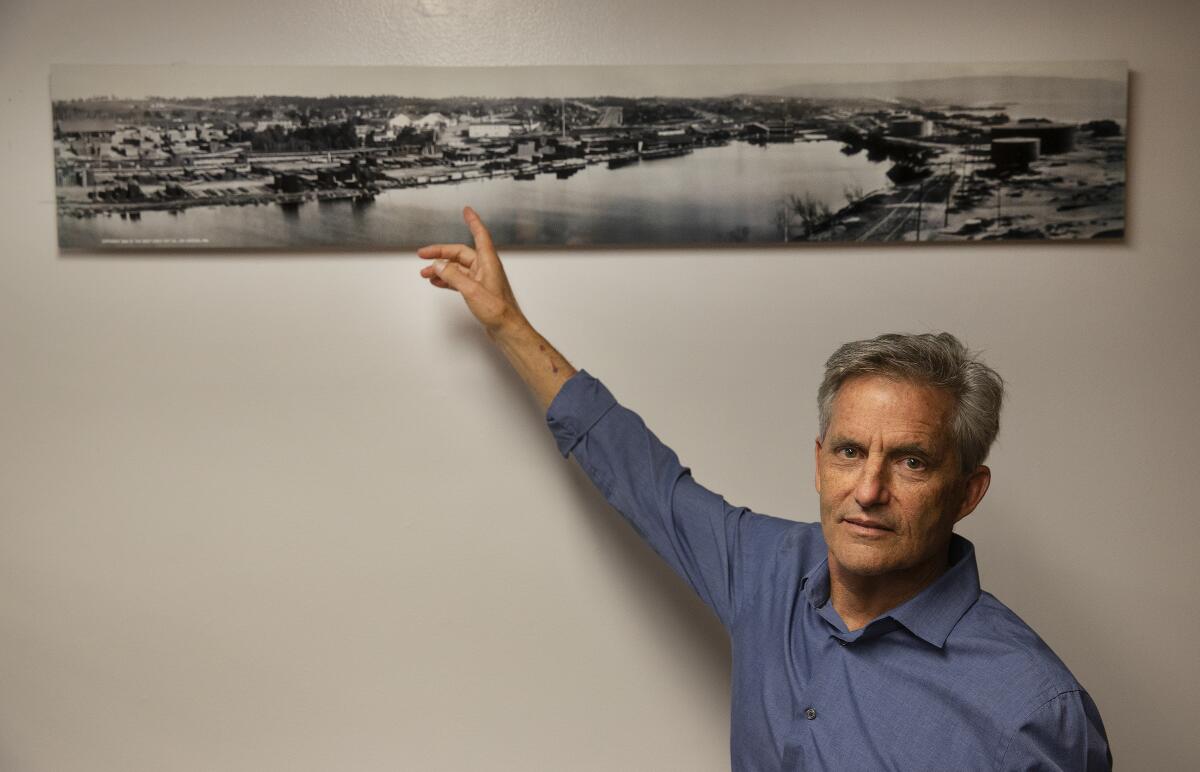
Brand helped defeat several plans backed by AES to redevelop the site, arguing they would allow for too much housing or commercial space along the waterfront. After getting elected to the City Council, he successfully fought the company’s efforts to rebuild the gas plant with technology that uses air for cooling.
Only during the last few years has Brand’s vision of a public park and restored wetlands started to look realistic.
A developer called Next Century Power agreed to buy the 50-acre site and sell half the property to Redondo Beach for $2 million an acre. The state plans to kick in $5 million toward the city’s purchase, and Los Angeles County officials have begun taking steps toward providing additional funding.
On one side, there’s the rising ocean. On the other, rising buildings.
On a sunny morning last month, Brand and Stacey Armato, a City Council member in neighboring Hermosa Beach, walked through an overgrown dirt lot just outside the aging gas plant. They stared up at the towering wires that carry electricity from the facility several miles through Redondo Beach.
The homes bordering the plant to the north are part of Hermosa Beach, which has more people per square mile than any other city along the California coast. A Redondo Beach-commissioned study found that nearly 22,000 people live within one mile of the AES facility — more people than live near the coastal gas plants in Huntington Beach, Long Beach and Oxnard combined.
“Each time they fire this plant up, we get complaints from our residents like you wouldn’t believe. It sounds like a jet engine,” Armato said.
“We’ve all been counting down to the retirement date,” she added.
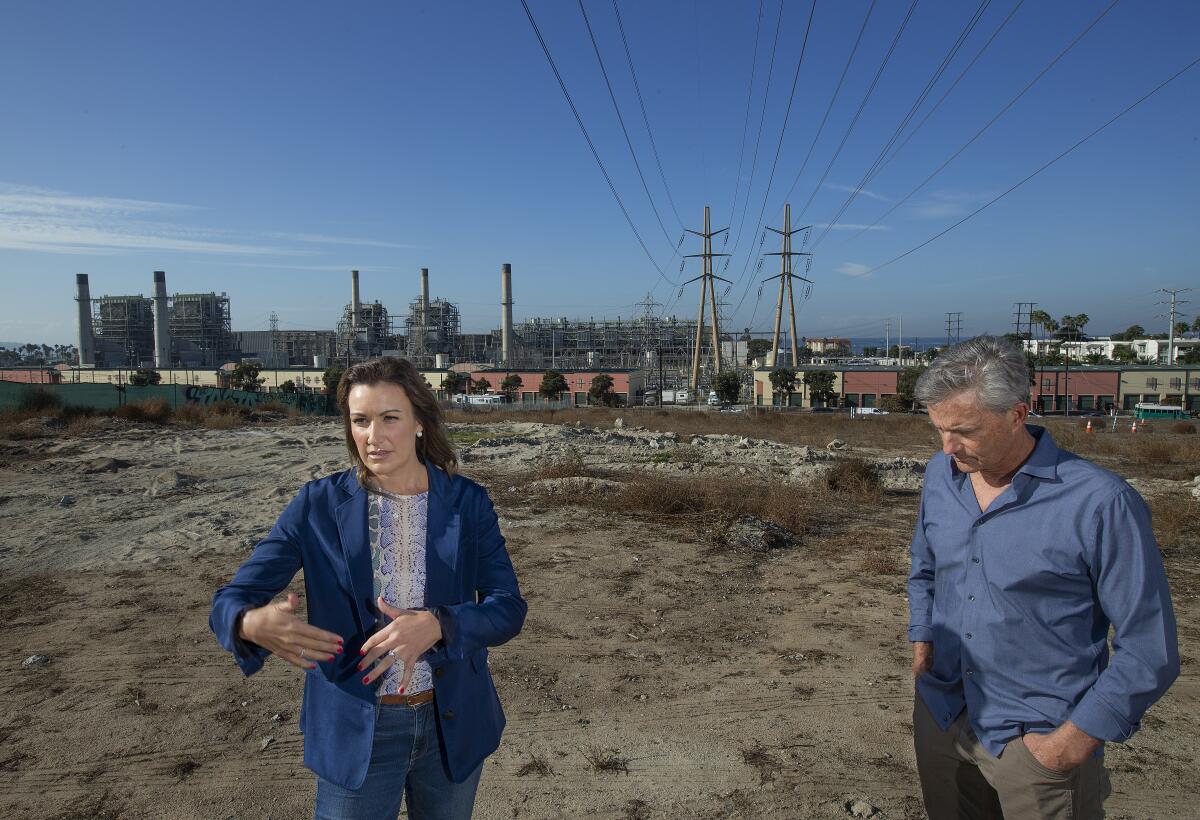
Nobody wants a gas plant
Redondo Beach is far from the only California community where residents have been fighting gas plants.
In the northeast San Fernando Valley, the Los Angeles Clean Energy Coalition is urging city officials to replace Valley Generating Station with cleaner power sources, citing the effects of air pollution on local residents. Glendale residents successfully lobbied city officials this year to substantially downsize a planned rebuilding of Grayson Power Plant, and to replace much of its capacity with solar, wind and batteries.
Los Angeles Mayor Eric Garcetti thrilled environmentalists and public health advocates with his announcement that the Department of Water and Power won’t spend billions of dollars rebuilding three gas-fired power plants along the coast.
In Oxnard, environmental justice advocates helped kill Puente Power Project, a planned gas plant that could have worsened an ongoing legacy of pollution in the predominantly Latino, low-income city. They also opposed the Public Utilities Commission’s recommendation that the Ormond Beach gas plant in Oxnard be allowed to keep running for an additional year, citing the potential harm to neighborhoods already suffering from high asthma rates.
All five members of the utilities commission expressed regret before voting to ask the state water board to extend the coastal gas plants.
Commission President Marybel Batjer — who was tapped by Gov. Gavin Newsom this year to lead the agency amid Pacific Gas & Electric’s bankruptcy and a seemingly endless wildfire crisis — called the gas plant decision “probably the most difficult vote that I have had since joining the commission.”
Commissioner Martha Guzman Aceves addressed Bill Brand directly: “I pledge to you, Mayor Brand, that I will never support a further extension.”

Despite those words, some clean energy advocates are skeptical.
Jim Caldwell, a technical consultant at the Center for Energy Efficiency and Renewable Technologies, pointed out that one of California’s largest power sources — the Diablo Canyon nuclear plant — is slated to begin shutting down in 2024. At a public hearing last month, he warned the state water board that the Public Utilities Commission could be back in 2023, asking for more time for the gas plants.
He also criticized the commission for claiming that clean resources such as solar-plus-storage can’t be built quickly enough to meet potential electricity shortfalls in 2021.
“That is self-fulfilling prophecy by the PUC,” Caldwell said. “Those resources are there. They have proven that they can do it.”
The state water board is expected to make a final decision next year.
In Redondo Beach, a single extension might not hinder plans for a public park and wetlands restoration. Representatives of AES and the developer buying the property both said the sale wouldn’t be affected by a state water board decision to let the power plant keep running another two years.
But Brand has kept up a full-court press against an extension, even after being diagnosed with Stage 4 lung cancer in June.
After 18 years pushing for a public park on his city’s waterfront, he’s never been this close — and he doesn’t want to let the opportunity slip away.
“A lot of dominoes are lined up to make this happen. The stars are very much aligned around a retirement date of Dec. 31, 2020,” Brand said. “If they extend that at all, it really throws a wrench into all these plans.”
